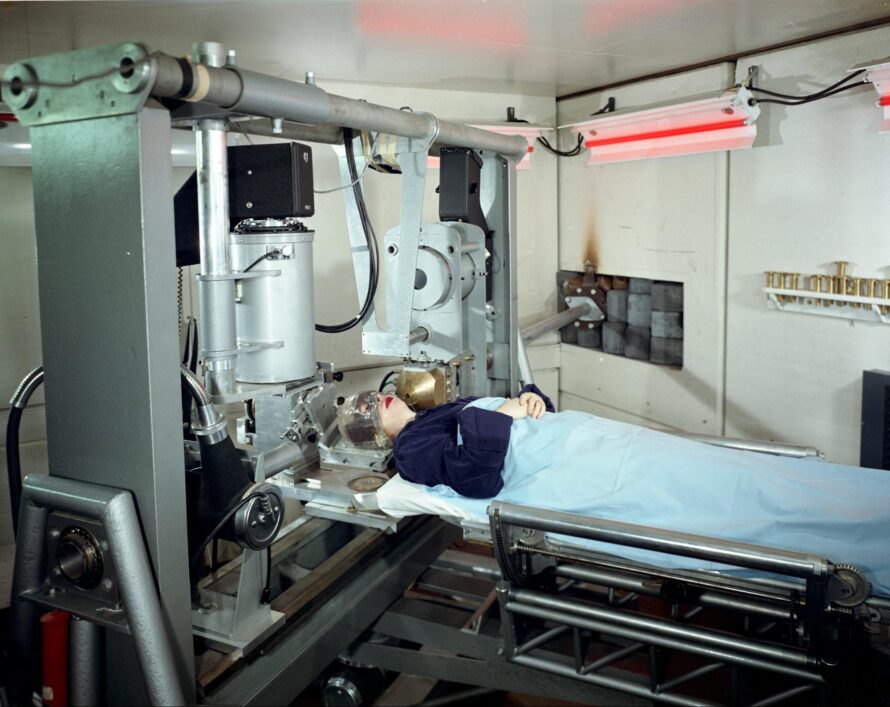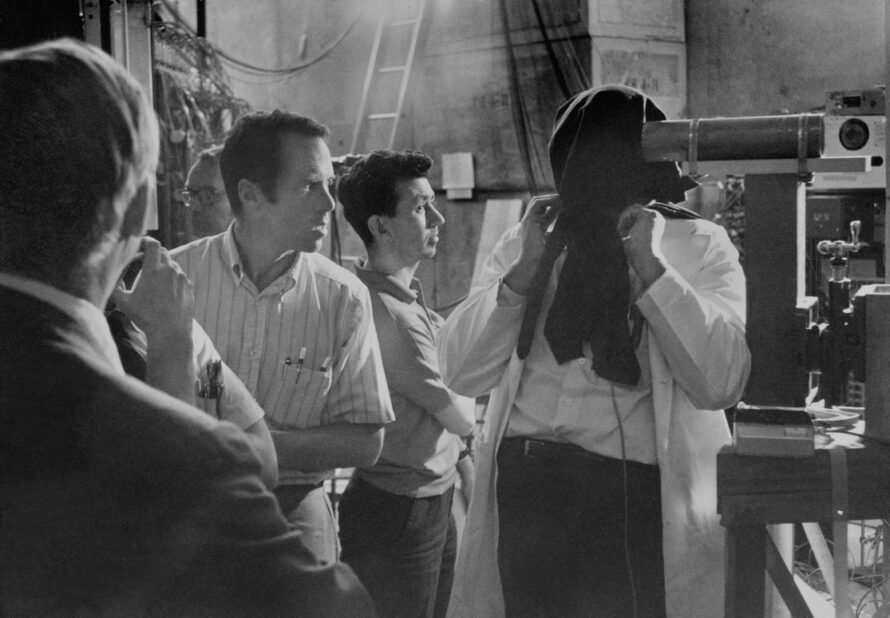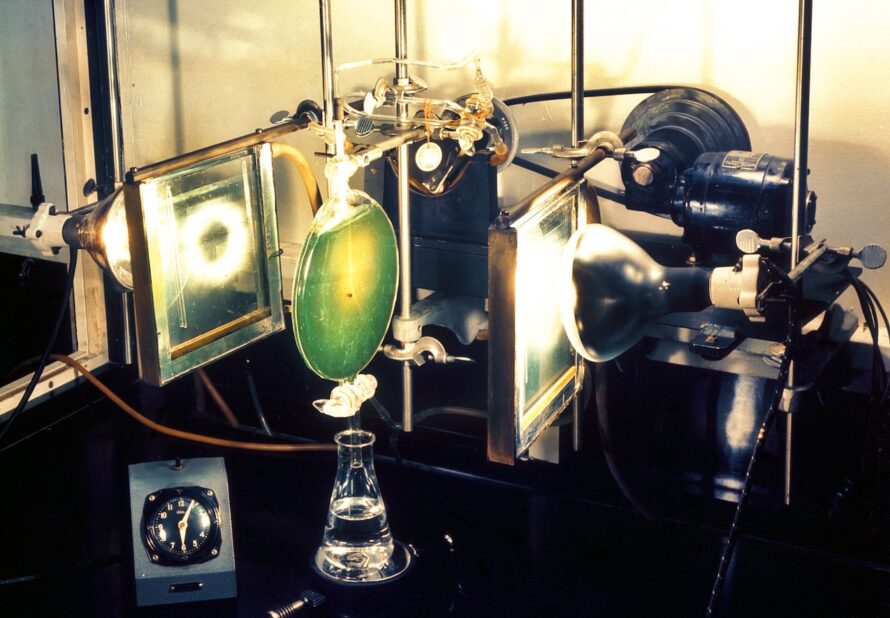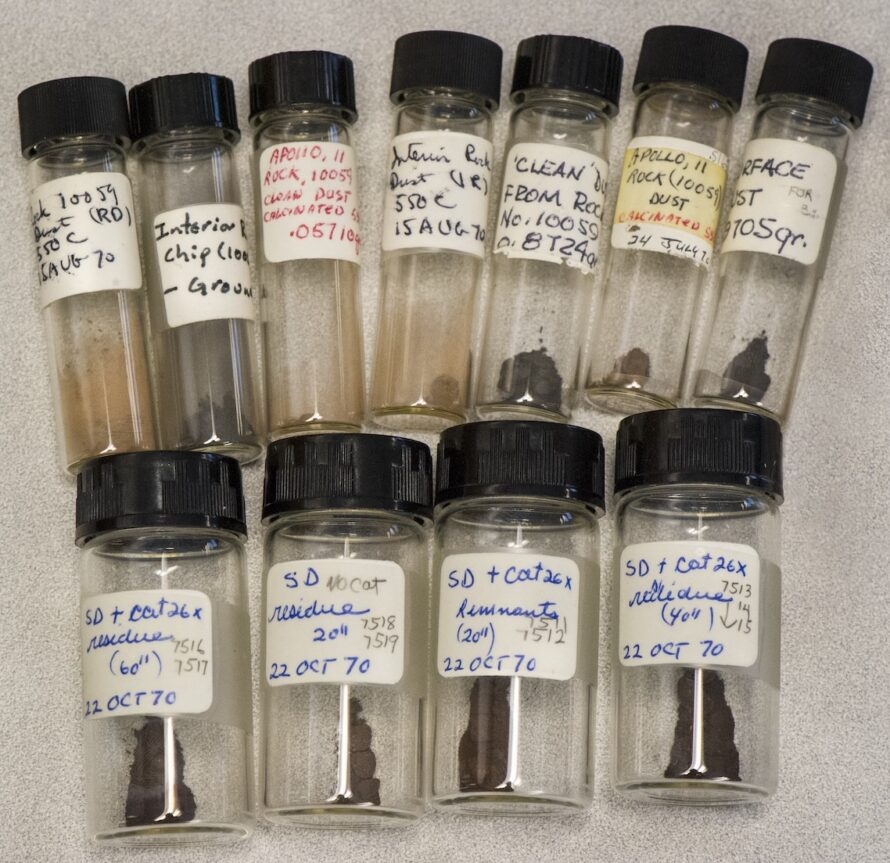In 1931, Ernest Orlando Lawrence founded the Radiation Laboratory at UC Berkeley, which later became a Department of Energy National Laboratory and was named for him. Lawrence’s invention of the cyclotron earned him the Nobel Prize in Physics in 1939. Early physics research at Berkeley Lab used the accelerator to smash atomic nuclei, leading to the discovery of artificial isotopes and the creation of the first artificial element. Research in the biosciences at the Lab got its start when Lawrence’s brother, John Hundale Lawrence, a physician as well as a physicist, joined him in Berkeley to investigate the use of the resulting radioactive isotopes for medical applications.
In 1945, Ernest and the UC Berkeley dean recruited Melvin Calvin to the chemistry department to lead efforts utilizing a newly available radioisotope—long-lived carbon C-14—for photosynthesis research. Calvin stocked his lab with fellow biosciences-interested chemists and together they mapped the path of carbon fixation in green plants. By design, research at the national labs focuses on challenges best tackled by big, multidisciplinary teams and large-scale instrumentation. Today, in the Biosciences Area at Berkeley Lab, our researchers continue in the tradition of the Lawrences and Calvin.

Leading a team of biologists, physicists, and chemists at what would become Berkeley Lab, John Lawrence pioneered the field of nuclear medicine. Today, his legacy—and the team science ethos that made it possible—live on in the Biosciences Area.

When radiobiology researcher Cornelius Tobias heard about mysterious balls of light observed by Apollo 11 astronauts, he hypothesized that they were seeing charged particles and devised an experiment—in which he played the part of the subject—to prove his theory.

Melvin Calvin’s breakthrough work understanding photosynthesis earned him the Nobel Prize in Chemistry in 1961. Decades later, Biosciences Area researchers are still trying to figure out the final pieces of the puzzle.

Calvin was among the Berkeley Lab scientists who analyzed rocks and soil samples from the Apollo 11 moon landing in the hopes of finding evidence of extraterrestrial life within them. Rumor has it that a rock or two spent some time on display in his office before finding their way into storage, where they were eventually rediscovered and returned to NASA.




